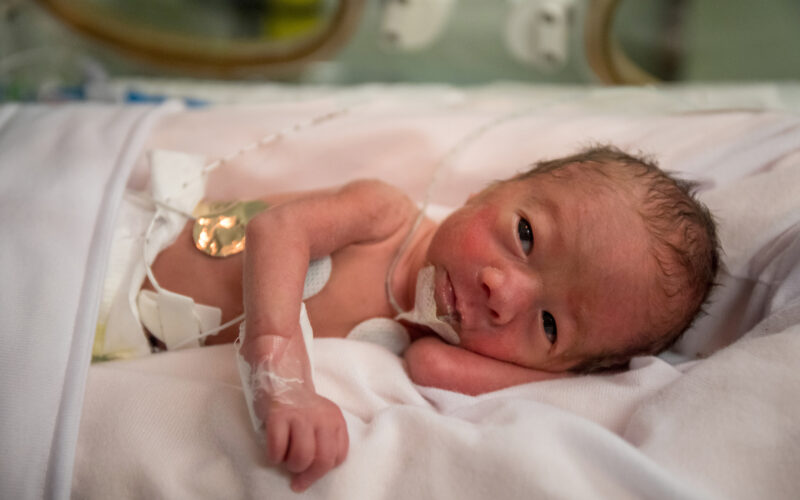Have you ever looked at a shampoo bottle and wondered “what exactly is IN this product?” Or rather “what exactly is left out?” These days, purveyors of beauty products seem more proud of the ingredients they leave out than the ones they include, given the ubiquity of those “Free from” lists on the front of modern packaging. But what exactly does it mean for a product to be “paraben-free,” “phthalate-free,” “sulfate-free,” etc.? Why should we care what’s in our personal care products? And how does one even pronounce “phthalate” (without spitting)?
Admittedly, I never used to care much about what was included in my beauty products. I’ve written before about learning how to properly care for the natural environment in college, including being conscious of the waste I generate, but I didn’t connect this awareness with properly caring for the “natural environment” of my own body until I got pregnant for the first time.
Because when I became pregnant, it hit me: All of a sudden, quite miraculously, I had transformed into the natural ecosystem for another living being, my own preborn child, and the choices I made about my own health were no longer strictly personal. It wasn’t just my body anymore. As I read and researched about the best practices to adopt for my health and my baby’s health, it became abundantly clear that many of the artificial (man-made) things around us contain unnecessary toxins, and that these toxins could adversely affect both me and my baby. Some, like Tylenol, can have long-term effects that won’t be apparent until well after birth. But some, like phthalates, can have more immediate effects on the birth itself (and, by the way, it’s pronounce “THA-lates”).
What are phthalates?
Phthalates are chemicals used to make plastics, also known as “plasticizers.” Women, in particular, have phthalate exposure through nail polish (where phthalates help prevent chipping) and in many other cosmetic products like hairspray and perfume (where phthalates are used as solvents and stabilizers). Phthalates are also used in cleaning products and household building and construction materials.
While many companies are now opting to avoid using phthalates as ingredients in their products, they are still introduced through use of machinery in the production process, through the packaging, etc. In fact, phthalates are so ubiquitous that approximately 99% of adults and children in the U.S. are exposed to them. Because phthalates are so common, it is important to know exactly how they affect us, particularly during the biologically vulnerable times of pregnancy and birth.
Phthalates and preterm birth
A 2022 study published in JAMA Pediatrics drew a surprising conclusion about phthalates and preterm birth. The study (which was a pooled analysis of 16 U.S. studies) analyzed the urine of over 6,000 pregnant women for phthalate levels, over the course of 35 years (1983 to 2018) [1]. The age of these women averaged around 29 years old, and they came from a wide range of ethnicities. The presence of phthalates in the pregnant women’s urine was compared to the occurrence of preterm birth (birth before 37 gestational weeks) to see if there was a connection.
The results were shocking: 12-16% higher risk of preterm birth was seen in those pregnant women who had a higher concentration of one of four specific phthalate metabolites (mono-N-butyl phthalate or MBP, mono-isobutyl phthalate, mono(2-ethyl-5-carboxypentyl) phthalate or MECPP, and mono(3-carboxypropyl) phthalate or MCPP) in their urine. Risk was higher in women whose urine had high levels of a mixture of different phthalates.
Researchers hypothesized that interventions to reduce phthalate exposure even by a mere 10% could have very modestly positive consequences, preventing roughly 2 additional cases of preterm birth per 1,000 live births. With phthalate exposure reduction of 30%, roughly 6 cases of preterm birth per 1,000 live births could be avoided.
Fascinatingly, emerging research is even beginning to suggest that exposure to phthalates before conception could lead to increased risk of preterm birth, indicating that these chemicals can have farther-reaching consequences than we might think.
How do phthalates enter our bodies?
You might wonder how something you wear on your body but never actually consume could cause so much trouble. To better illustrate how this is possible, think about exactly what body parts are being exposed to these toxins, i.e. your skin, fingernails, cuticles, and lips. Our bodies can absorb chemicals through these sensitive areas.
Research suggests that the facial skin is much more absorbent than skin on other areas of the body (which gives one pause considering just how many products are applied to the face, whether cleansers, moisturizers, makeup, or sunscreen). In fact, another study examining the presence of triphenyl phosphate (another toxin) in individuals who got their nails painted showed that the levels of this chemical in their bodies increased seven times within ten to fourteen hours of the polish being applied, proving that our bodies can absorb chemicals from products applied to our skin. Phthalates, then, are known to penetrate our bodies in a variety of everyday ways, and, as we have seen, may impact our own pregnancy and birth.
Practical ways to decrease phthalate exposure
It can be scary to think of all the unseen dangers that lurk around us that impact not only our own health but that of our children as well. It’s important to keep sight of what we can do rather than obsess over what could happen and what’s outside of our control. After all, stress affects our natural cycles and rhythms, too, and we want our own fertility—so essential to us as women—to be as healthy as possible! The following are some practical tips to implement in your lifestyle to avoid toxins like phthalates.
Choose wood and natural fiber over vinyl and PVC
The materials in the environment in which we live can make a difference in our phthalate exposure over time. Use natural products like wood and natural fiber when choosing house décor, building materials, and other products around the home. Even some furniture that seems to be wood is really made of composite material glued together with toxins! If solid wood furniture runs out of your price range, shop at used furniture stores, thrift stores, and antique shops—old pieces of furniture are not only beautiful, but are made of real, natural materials (just watch out for antiques with old paint, which may contain lead).
Likewise, opt for wood, tile, or natural linoleum when choosing flooring, rather than vinyl or laminate. There are a number of good options out there that won’t break your budget, although if you do have the ability to invest in a higher-quality flooring, you will increase your home’s value as well as increase your own health.
Opt for glass over plastic
Use glass or stainless steel containers for food storage (not plastic), and cook meals at home whenever possible (and in cookware made without nonstick coating). Interestingly, research also suggests that eating out, whether at fast-food joints or sit-down restaurants, increases phthalate exposure!
Switch out conventional beauty products for cleaner options
Invest in cosmetics with natural ingredients like minerals. Through their Skin Deep initiative, the nonprofit Environmental Working Group (EWG) maintains an extensive database of clean makeup products plus reviews of conventional makeup products based on both how hazardous their ingredients are and how high-quality the research into those ingredients is. “Clean beauty” companies also tend to encourage minimal/less heavy makeup use, which ensures that the products last longer as well as being better for your skin health. While on the expensive side, this can be a worthwhile investment that pays dividends in long-term health.
Look for the Safer Choice seal when shopping
In other beauty products, avoid ingredients such as “fragrance” and “parfum” since the U.S. Food and Drug Administration (FDA) does not require that phthalates be listed as ingredients if they are part of the “fragrance” or “parfum.” As this article points out, even the term “unscented” can just mean that another chemical is used to mask the smell of certain ingredients. Look for options with a “Safer Choice” seal from the U.S. Environmental Protection Agency (EPA), which is a promise that the product is toxin-free.
Start somewhere and start small with lifestyle changes
Awareness of toxins can be an overwhelming thing. Alternative choices are often hard to find, and are usually more expensive. Remember: the goal is to start small and make lifestyle changes where you can, not to get so overwhelmed you never start! Our health is dependent not just on what we put in our bodies, but also what goes on and around our bodies. The choices we make affect us, our children, and our future children–let’s be mindful of our long-term impact and live accordingly.
Additional Reading:
How to “green” your period (and why you might want to)
Having “green sex” might be the best thing you can do for the environment
The eco-friendly baby feeding option: how breastfeeding impacts the environment
References:[1] Welch BM, Keil AP, Buckley JP, et al. Associations Between Prenatal Urinary Biomarkers of Phthalate Exposure and Preterm Birth: A Pooled Study of 16 US Cohorts. JAMA Pediatr. 2022;176(9):895–905. doi:10.1001/jamapediatrics.2022.2252







